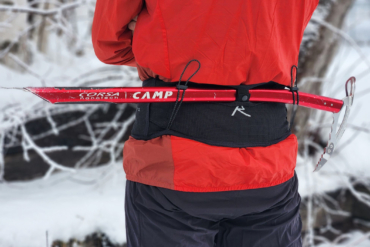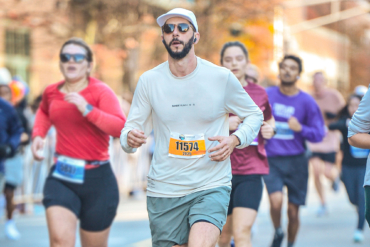Haiti, the poorest country in the western hemisphere, is among the last places most people would go to run an ultra-marathon. But this coming February a group will set out from Port-au-Prince on the second edition of the 60-mile Run Haiti, a stage race that crossed a nation ravaged by natural disasters, disease, and abject poverty.
Along the way the race organizers hope runners can experience the beauty and hope in a nation wrought with difficulties. Erin Cottos, one the organizers, was there when eight runners completed the journey for the first time last winter. She is a driving force behind the 2013 edition of the race and is currently formulating plans for about 25 runners to navigate the 60-mile course between Port-au-Prince and the town of Jacmel this winter.
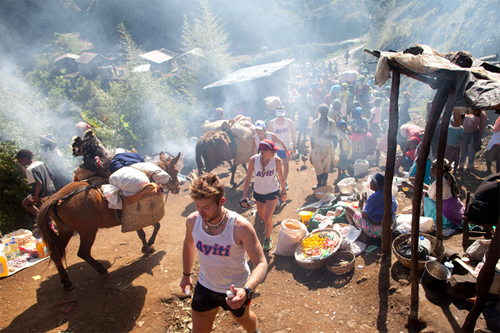
Cottos said the run showcases the “often-veiled nature and culture of Haiti while promoting exercise among its residents.” She continued, “We hope through this race to bring more awareness to the beauty in Haiti and possibly boost the eco-tourism” interest in the island nation.
Runners during last year’s event moved mostly as a group. While there was a competitive nature among the runners, the goal was to tour the country and experience the wilds. Said Cottos, “There are some amazing places in Haiti but no one hears about that side.”
Cottos, a physical therapist, moved to Haiti from Texas in 2011 to volunteer at Haiti Medical Missions. She met volunteer occupational therapist Jeanie Zelinski and volunteer physician Clayton Bell. The three shared a passion for running and through their efforts the first Haiti ultra-marathon was born.
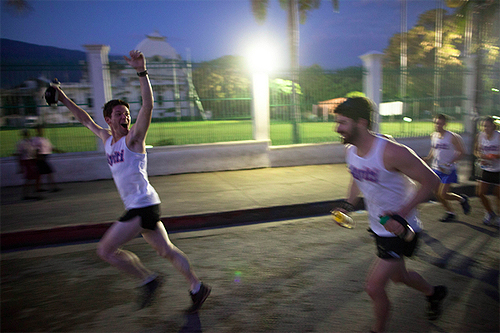
The 2012 course started in downtown Port-au-Prince, which Cottos said entailed “running through hectic streets, dodging cars, motos, people.” Day two last year was an intense climb up through the mountains to Seguin. The terrain was slick, steep and rocky, interspersed with stretches of dirt road.
The route snaked through 6,000-foot mountains between the sleepy towns of Furcy and Seguin. The group ran singletrack trails to a school where they met about 150 kids and told them about the run. For the third day, the course went from the mountains to the beach in Jacmel.
To host a race in a country affected by cholera outbreaks and lacking physical infrastructure, organizers face unique challenges. Much of the course is not accessible by car and medical care could be hard to find. “Everything support-wise has to either be carried with the runner, carried by mule, or packed on an ATV, which are hard to come by,” Cottos said. “We want the race to grow but will not be taking on a mass amount of people.”
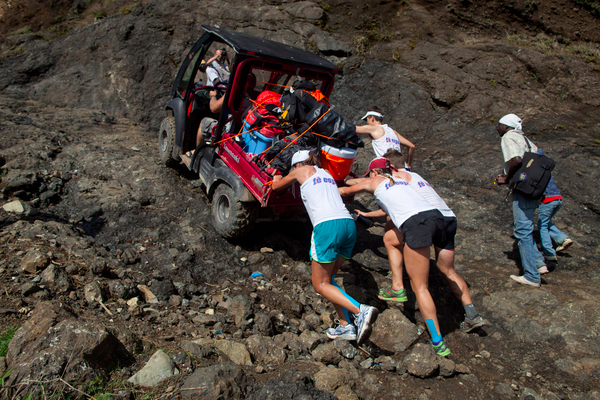
Just eight people ran the 2012 edition of the race, including one Haitian runner who joined along the way and finished the journey with the group. The 2013 run will likely be limited to 25 people. Runners interested in contributing to the effort or getting involved can go to the race website.
One goal of the run is to raise funds for Haiti Medical Missions of Memphis and programs that focus on stroke prevention and education about exercise and healthy living among Haitian people.
Many details of the race, such as cost, entry dates, and other logistics, are still being worked out. Cottos said ultimately she would like to see the race embraced by Haitians in Haiti who would take ownership of the event. “We want to continue to spread the word so people can see there is so much more to Haiti and at the same time continue to help the people in Haiti,” she said.
—Sean McCoy is a contributing editor. He worked for 10 years in the Caribbean as an editor and photographer at the Virgin Islands Daily News.




